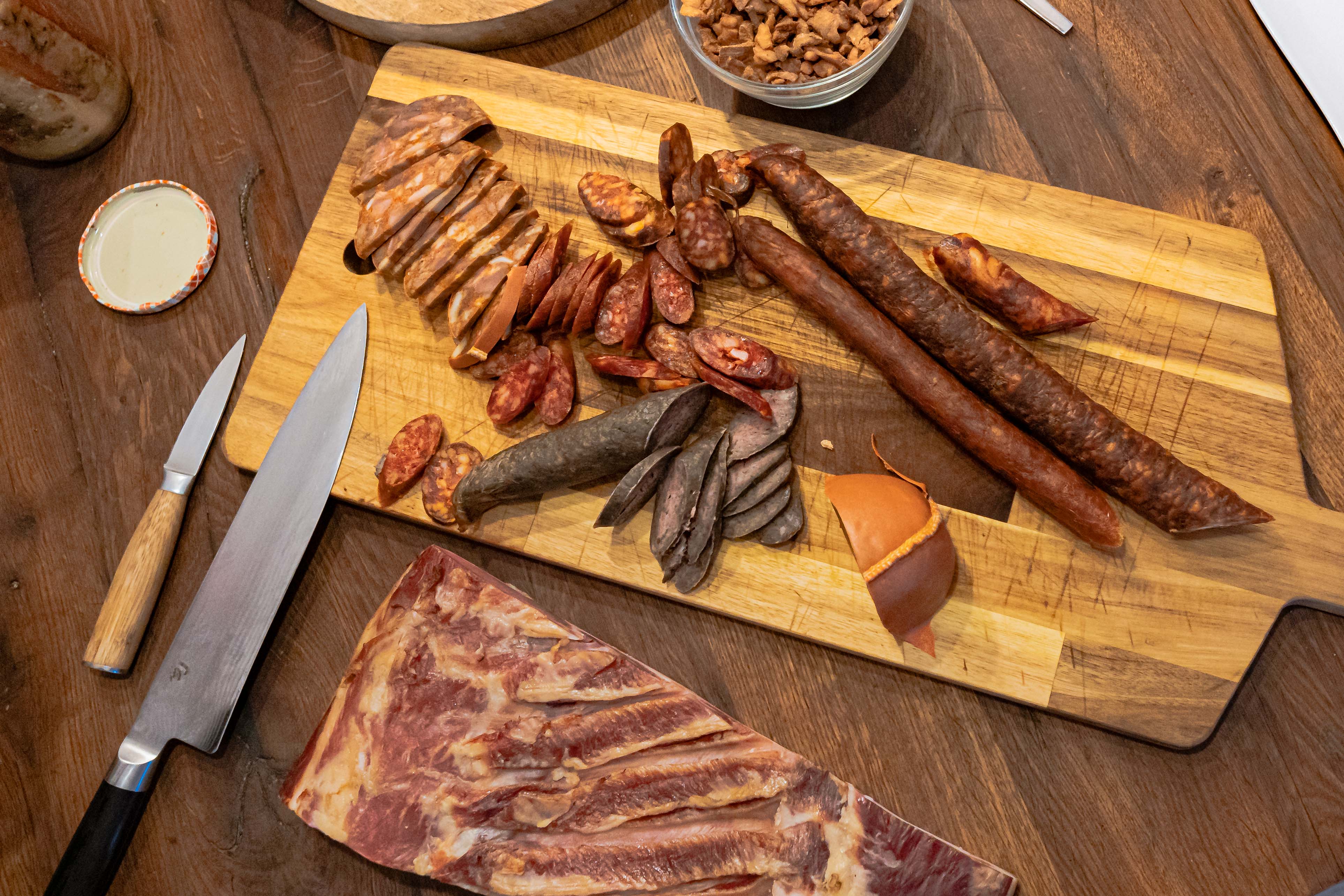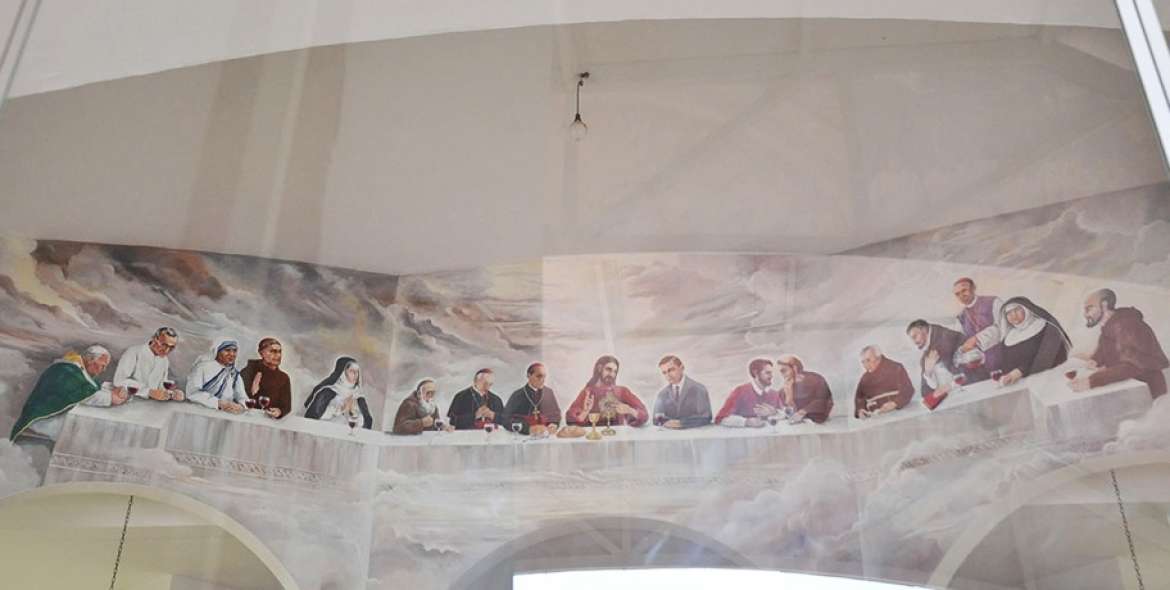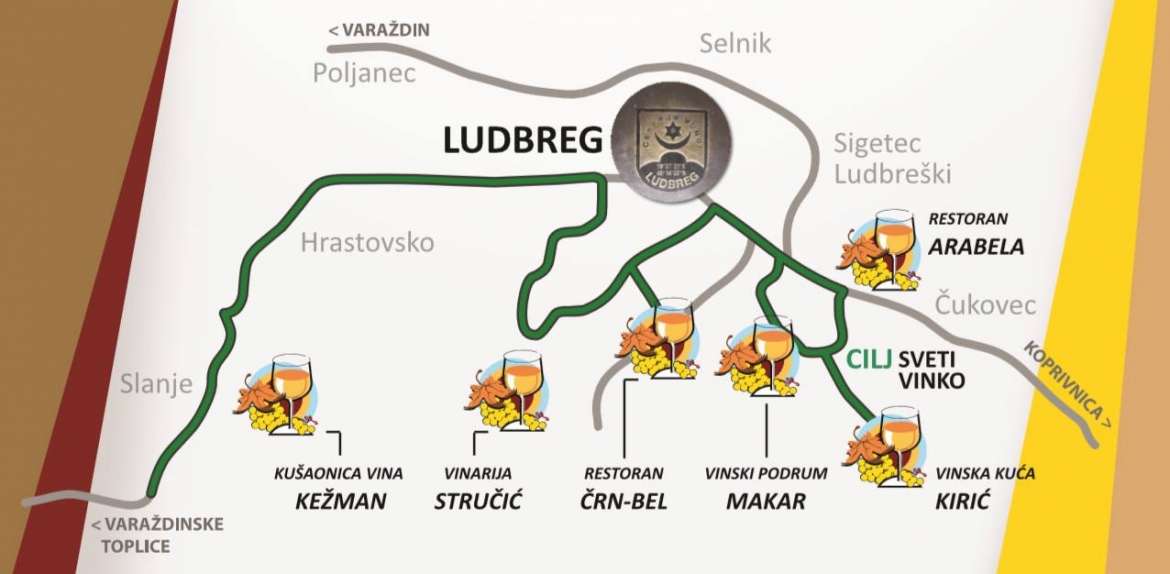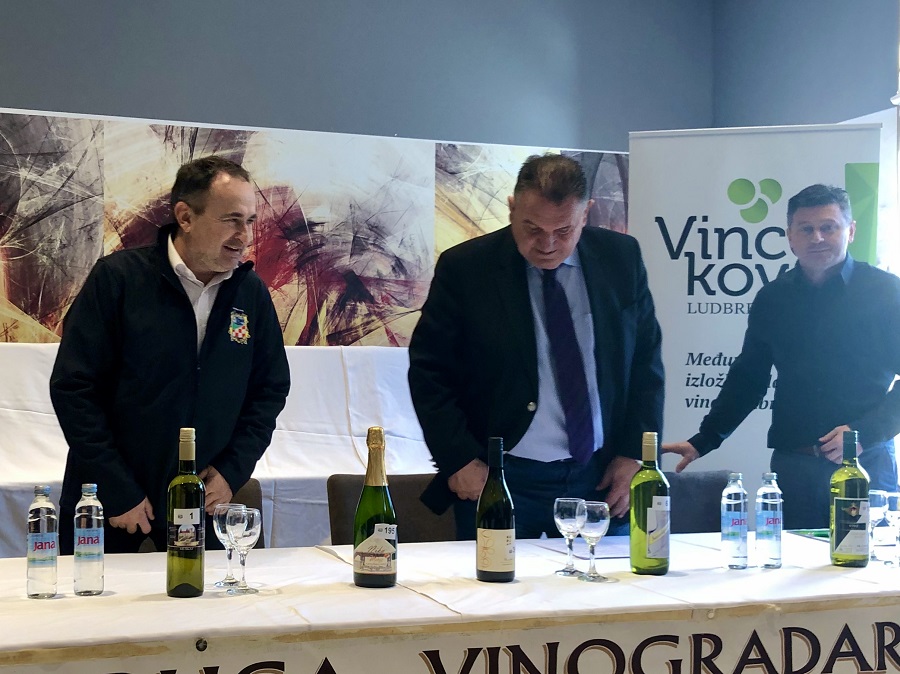Exploring Croatian Traditions: Vinkovo, Saint Vincent Blessing Vineyards
January 16, 2023 - If it's sunny on Vinkovo, then " into the barrels abundant wine will flow". If a sparrow bathes in a puddle on that day, winemakers will "bathe" in wine in autumn. If it's a dry day, there won't be any wine either. There is a direct correlation between how much wine the winemakers drink and how fruitful their grapes will be. Those are some of the beliefs associated with the feast of one of the most beloved saints among winemakers. St. Vincent found his place in the calendar on January 22. As Croatian tradition clearly and long has stated, a visit to the vineyards is non-negotioble on the day, regardless of the winter weather conditions.
As Agroklub writes, many traditions are tied to Vincekovo, Vinceška, Vincelovo, Vinkovo... as this holiday is called in different parts of continental Croatia, but the most common one is the blessing of vines.
A blessing for a more fruitful harvest
In a prayer with the priest, winemakers with their friends invoke God's blessing "for bountiful harvests and abundant fruits of all kinds, above all rich grapes" in the coming year, but also protection of the vines from frost, hail, disease, pests... in short, anything that can cause damage.
In the east of Croatia, holy water is sprinkled or blessed wine poured over a vine on which kulen, sausage or schvargl are hanged. This will ensure that the year's clusters of grapes are at least the same size as the meat.

Steve Tsentserensky
In some places, the host consecrates the vineyard by sprinkling holy water on all four sides or pouring blessed wine in its four corners. In the northwestern parts of the country, a prayer is said to God to protect the vine and keep it safe from hail and frost, and to St. Vincent for a good year ahead. The traditional prayer in Croatian: "Dragi Bog čuvaj trsa mog, evo Ti zrelog vina da bu dobra godina. Oblake razmakni, sunce primakni, mraza zgoni, na tuču zvoni. Se bum obdelal da bi v jesen popeval. Rozgvu si bum zel i vu vodu del. Sv. Vincek pokaži svetu kak bu vu novom letu".
And just as this prayer says, the host then takes a pair of scissors and with the first cut of the vine marks the beginning of the year's pruning and thus symbolically starts the new season. A cut off branch is taken into the house, where it buds in a warm place, and based on the number of buds, the hosts can predict how fruitful their crop and the year's harvest will be.
Kulen for the Vincilir (Vineyard Master)
Traditionally, after the "official" part, many guests toast with good wine to a successful start of the year, cheerfully singing, next to an open fire. And where there's fire, there's bacon or sausage roasteing on sticks, maybe some shepherd's or wine bean stew cooking. The crowd also enjoys the kulen that hanged on the blessed vine. Traditionally, though, this kulen would be given as a reward to the Vincilir, the man who looked after and cultivated the vineyards 'as if it were his own'. This stems from times when Vincilirs had to travel by horse-drawn carriages from the Slavonian villages to the vineyards, which took a lot of time and energy.
In some Croatian regions, this celebration is exclusively for men,since according to another popular belief, the presence of children or women would invite hail.
In Moslavina, on the other hand, beliefs dictate that there should be enough wine at the celebration to last until the evening, because otherwise (again) hail would destroy the vineyard. If water leaks from the eaves on the day, the year will be wet and the harvest rich. To protect themselves from evil spells, people there hang a wreath of garlic on the porch.
Some winemakers also open their cellars for the blessing of young wine, so on that day fans of this elixir can have a long celebration with a spontaneous tour of several cellars along a wine road. It is practically unimaginable that any host who cares about their reputation does not host everyone who comes by on that day.
Steve Tsentserensky
Five "commanded" holidays
It is interesting that the 'wine saint' does not really have any concrete connection with vineyards or wine, if this clarification is sought in a religious sense. According to his biography, this early Christian martyr, deacon Vincentius lived in Spain, today's Saragossa, in the 4th century, during Diocletian's persecution of Christians. In order to renounce his faith, the proconsul Dacian subjected him to terrible torture and threw his body to the beasts. According to the legend, his tortured body was saved by a raven, so he was thrown into the sea with a stone around its neck, but the sea washed his body ashore. He is commemorated on the day he died in 304, and his relics are preserved in Lisbon.
It is to be assumed, therefore, that the connection can be sought with some pre-Christian or pagan ritual of farmers, given that it is in the calendar part of the year when the beginning of the new vegetation and the new cycle of agricultural work is expected. Some associate the celebration of Vinkovo St. Vincent with the god Dionysus, who was celebrated in ancient Greece at the beginning of February. Barrels with new wine would be opened, all to be drunk, thus marking, just like Vinkovo, the awakening of nature.
Most people support the simplest interpretation, according to which they began to worship this saint as their patron because the root of his name in many languages is 'wine'.
All in all, Vinkovo is one of the five "commanded" holidays of winemakers rooted in Croatian tradition. There are also St. Juraj (April 23), St. John the Baptist (June 24), St. Michael (September 29) and St. Martin (November 11). Traditions dictate that for Jurjevo new vines should be planted, while pruning, fertilizing and digging of the old vines should be completed. For St. John the Baptist, the vines are should be weeded and sprayed for the second time. After this memorial day in the vineyard, the vines are plucked and regular spraying is done, then Miholje awaits, which marks the beginning of the harvest. Active work ends, and winemaking begins for Martinje, when young wine, freshly produced must is blessed.
For more, make sure to check out our dedicated Lifestyle section.
Ludbreg's International Young Wine Exhibition Held
The town of Ludbreg hosted yet another edition of the International Young Wine Exhibition Vincekovo 2020 last Friday, and the international jury chose the best young wines of the year.
It was the 28th edition of the festival, and for the first time, the jury was international, consisting of wine experts (oenologists and sommeliers from Croatia, Hungary, and Slovenia), including Croatian Siniša Lasan, several-time Croatian Sommelier champion, and Decanter judge.
Varaždinske vijesti write about the exhibition: Zlatni trsek, the highest form of recognition of excellence (translated as "the gold vine") this exhibition gives to their wines, was awarded to 94 wines. The silver vine (Srebrni trsek) was awarded to 285 wines, and the bronze vine (Brončani trsek) to 106 wines. The champions of the Vincekovo 2020 exhibition are Sauvignon by the Kopjar family from Novi Marof in the white wines, and Tomislav Nadić's Syrah from Nadin (near Zadar!).
The ceremonial opening of the exhibition, which included the presentation of the awards for the best wines, was held on Friday night. Varaždin County Prefect Radimir Čačić said at the opening that the wines of Varaždin county and the Ludbreg region had started to showcase their excellence on the international stage of late and that it's something that needs to be continued.
The county is supportive of the winemakers and of the exhibition itself, and the winemakers need to take full advantage of that, either through education or through going to the most significant international exhibitions. He pointed out the pumpkin seed oil from Varaždin County as an example of how to brand the highest-quality product, which managed to create a fully recognisable brand within two years. The same can be achieved with wines, the Prefect said, but you need to improve and learn, as learning from the best is the only way to show progress.
Ludbreg mayor Dubravko Bilić said that the exhibition, while 28 years old, is still young enough (as young as the young wine!) to adjust and change: "The imperative is to be excellent, and to have the wines from the Ludbreg vineyards among the most recognizable in Croatia!"
Ludbreg Hosting Croatia's Largest International Young Wine Exhibition, 28th Edition
24 January, 2020 - Ludbreg winemakers will host the 28th edition of what has become the largest international exhibition of young wines in Croatia at the end of the month.
It is almost four years since I visited the small town of Ludbreg in northern Croatia, a town like no other in the country. Its name translates as 'Crazy Hill' and it is best known in Croatia for being 'the centre of the world.' As you can see from that initial trip report, Ludbreg has so much more to offer than its famous geographical location.

And with each visit (it is now only half an hour from my new home in Varazdin county, new discoveries. I learned about the Vatican-authenticated Eucharistic Miracle of Ludbreg on my first visit, but it was only later that I realised that this is, in fact, the only authenticated miracle in Croatia, and you can visit it. It is an incredible story of three churches, one of which the Croatian Government promised to build a church of thanks in the miracle town in 1788 if God stopped an approaching plague. While God kept his side of the bargain, it took Croatia more than 200 years to build the church, as recently as 1994 in the middle of the Homeland War. It is a fascinating story, and there is a certain irony in that an increasing number of Polish pilgrims spend the night in Ludbreg (the authenticated miracle town), en route to Medjugorje, where nothing has been officially acknowledged.
Coming from Dalmatia, the home of superb wines, including the original Zinfandel, I was surprised to find such a vibrant wine scene in places like Ludbreg. Or one so organised. While Dalmatia, despite its huge potential, still does not have a proper wine road, its winemakers far from united, Ludbreg boasts its own little wine road, as well as excellent cooperation between the winemakers, which manifests itself in the Ludbreg Wine Association, Trsek.

I was in Ludbreg on Thursday, where I learned another interesting fact about this unusual town - it has the biggest international exhibition of young wines in Croatia. E-Varazdin reported on the press conference in Ludbreg promoting the exhibition, a translation of which is below.
The 28th International Young Wine Exhibition titled "Vincekovo 2020", the biggest young wine exhibition in Croatia will be held on January 31st in Ludbreg.
The exhibition opening will be held at 5 pm at the Crnković hotel, after which the medals and awards will be presented. The visitors will be able to enjoy over 500 samples of young wine from all over Croatia, but also from Slovenia and Hungary, including those wines which have received the highest grades from the jury. The show was presented in the Crnković hotel by County Prefect Radimir Čačić, Ludbreg mayor Dubravko Bilić and President of the winemakers association from Ludbred Branko Kežman. This is the first year the exhibition will be titled "Vincekovo", and it will receive strong support from the County and the town of Ludbreg.

County Prefect Čačić said that around 500 samples of wine remain in the competition, after a fierce selection, which shows that the competition is strong, and the exhibition relevant. This is a region where modern, fresh wines of low alcohol and higher acids are made, and such wines are currently a global hit. Varaždin County is not a significant wine producer, as only between 1.5 and 2 per cent of Croatian wines are made in the County. However, the wines produced in the County are high-quality, which have recently been recognized on the global level, and Čačić said he expected around 10 to 15 wines made in the County to appear in the international competitions. And he also expects this exhibition to grow, and within 5 to 6 years it should be the best the County has to offer on Croatian and European level.
Ludbreg has always been connected to wine, and in the last 20 or so years people find the ways to make money and present their region by making good wines, mayor Bilić said. This exhibition was a learning experience for many local winemakers, who have learned in the past 28 years how to make excellent wines, and now the time has come for the winemakers to get together and start creating a brand of Varaždin County wines. Ludbreg exhibition of young wines has become international, so this is another opportunity for the winemakers to create the tourist story that lasts throughout the year, that will benefit everyone. It's an opportunity for them, as tourists are looking more and more towards continental Croatia, and there is the potential to provide enjoyment for all the senses. Mayor Bilić confirmed the Prefect's words, that while they are small, they need to be excellent at everything they do.

(TCN with Varazdin County Prefect Cacic and Ludbreg Mayor Bilic)
Almost thirty years ago, when the first exhibition was held in Ludbreg, the winemakers were in charge of grading the wines. These days the top experts do that work - enologists and sommeliers from Croatia, Hungary and Slovenia. Most of the wines at the exhibition are blends, and varietal wines are mostly Graševina, Rajnski Riesling and there's an increasing number of Moscatto wines, Branko Kežman from the Winemakers association from Ludbreg explained.
To follow the latest from Ludbreg, check out the dedicated TCN section.




